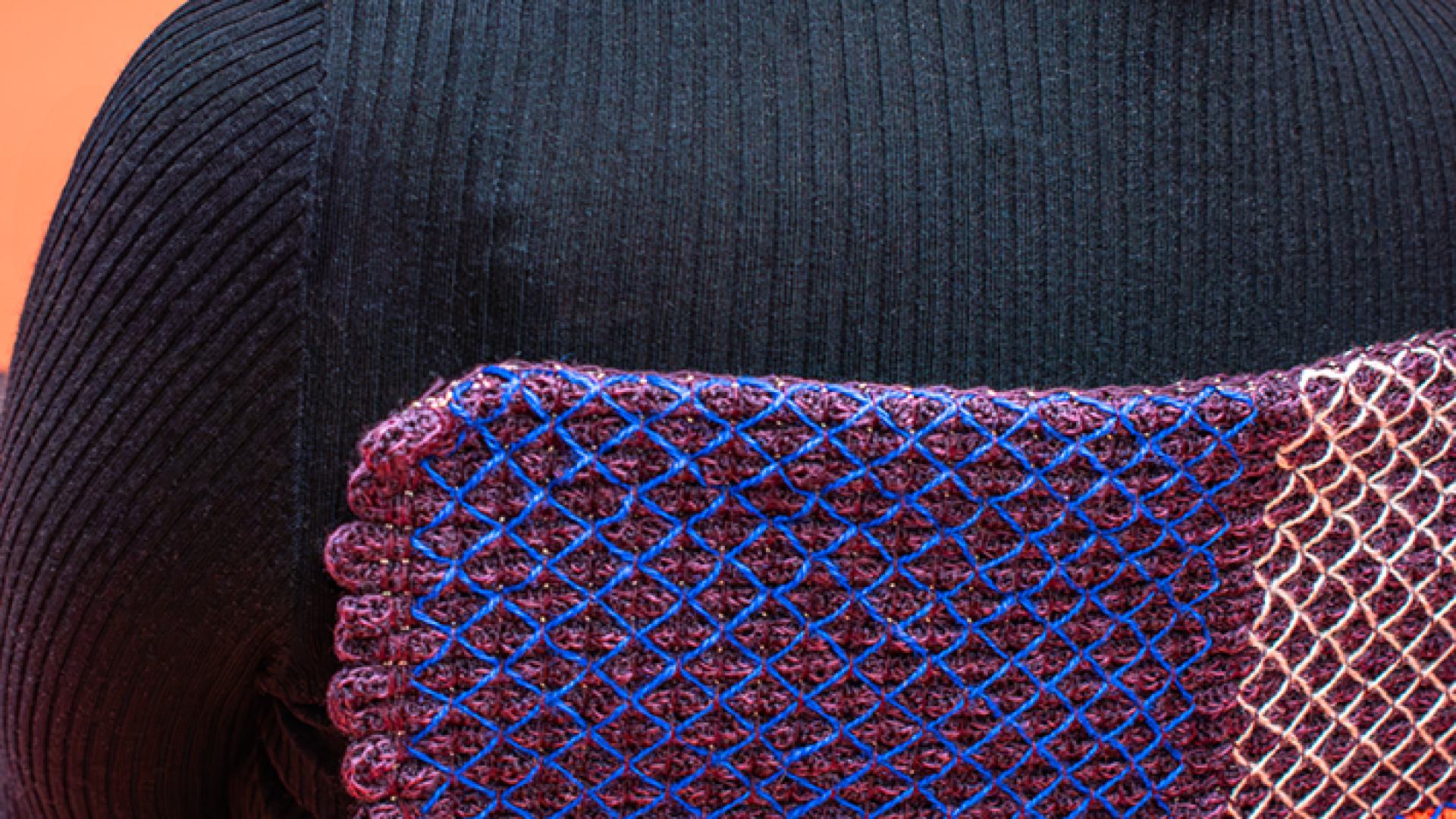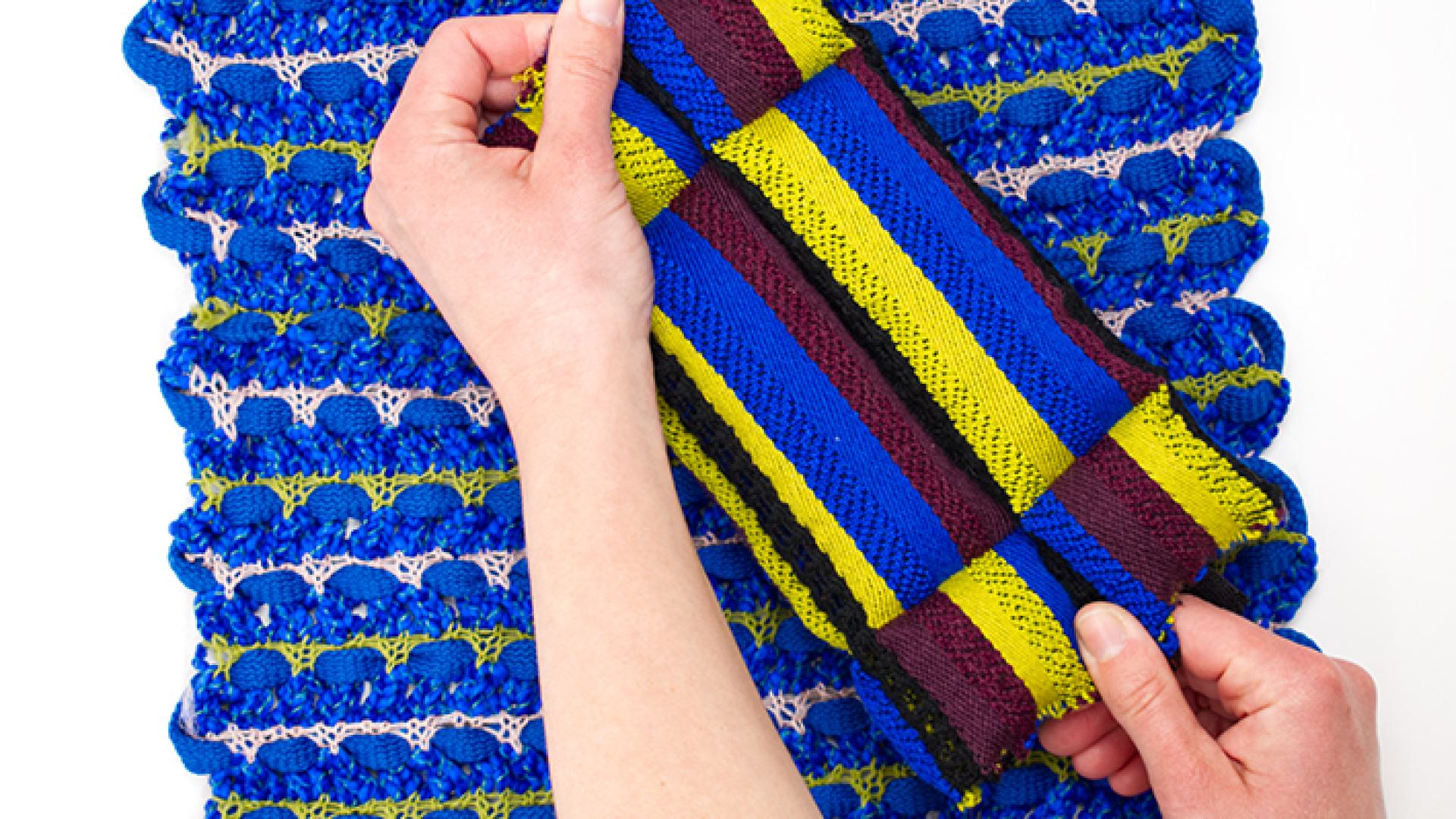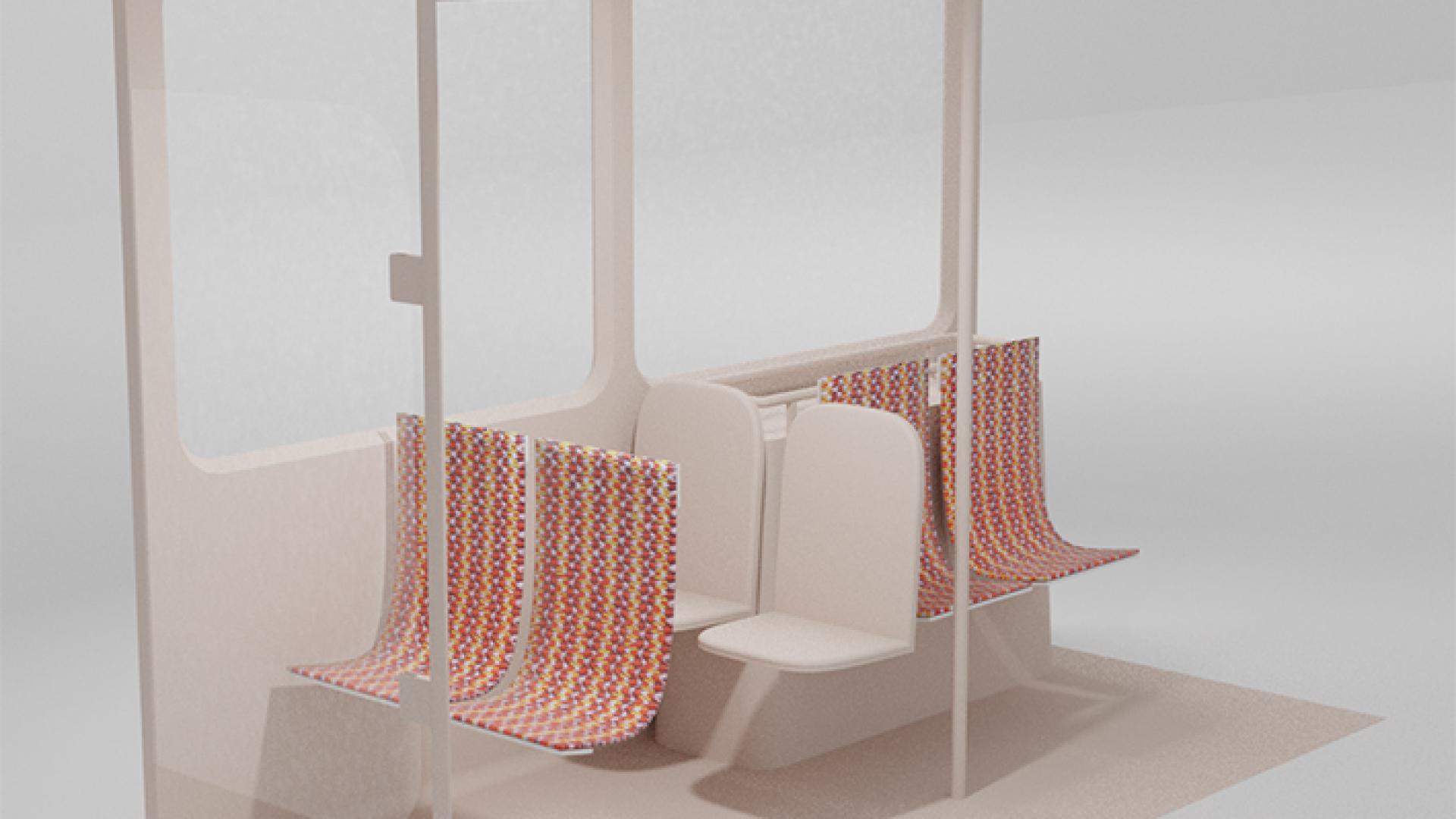ecological thinking
Unlike conventional seats in buses and trains, the seat shell, foam, and adhesive are omitted. This results in savings in materials, weight, and space. The seats are therefore resource-efficient and energy-saving. Since the textiles are stretched over the frame, they can be easily removed and cleaned, which significantly extends their lifespan. Replacement is also much easier. In addition, all textiles are designed as mono-materials and can therefore be recycled.
mobility innovation
In order to successfully implement the mobility transition, public transport must be able to carry significantly more people. To create additional capacity, especially during peak times and on short-distance routes, lightweight and space-saving alternatives are needed. At the same time, the textiles offer a high level of seating comfort, incorporate accessibility, and are cost-efficient for transport companies. This contributes to greater social equity in buses and trains.
Thanks to a well-thought-out and appealing design, a sense of appreciation is also fostered, promoting positive user interaction.

 Dogs are allowed
Dogs are allowed
 Free wifi available
Free wifi available
 Toilets available
Toilets available
 Partially wheelchair accessible
Partially wheelchair accessible
 Wheelchair friendly toilet available
Wheelchair friendly toilet available




